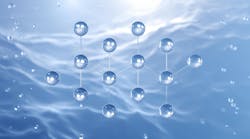The U.S. Environmental Protection Agency (EPA) finalized a rule to modernize Clean Water Act reporting for municipalities, industries and other facilities. The final rule will require regulated entities and state and federal regulators to use existing, available information technology to electronically report data required by the National Pollutant Discharge Elimination System (NPDES) program instead of filing written paper reports.
EPA estimates that, once the rule is fully implemented, the 46 states and the Virgin Islands Territory that are authorized to administer the NPDES program will collectively save approximately $22.6 million each year as a result of switching from paper to electronic reporting.
The final rule will make facility-specific information, such as inspection and enforcement history, pollutant monitoring results and other data required by NPDES permits accessible to the public through EPA’s website.
The Clean Water Act requires that municipal, industrial or commercial facilities that discharge wastewater directly into waters of the United States obtain a permit. The NPDES program requires that permitted facilities monitor and report data on pollutant discharges and take other actions to ensure discharges do not affect human health or the environment.
Currently, some facilities subject to these reporting requirements submit data in paper form to states and other regulatory authorities, where the information must be manually entered into data systems. Through the e-reporting rule, these facilities will electronically report data directly to the appropriate regulatory authority.
In response to state feedback, the final rule provides authorized NPDES programs with more flexibility for implementation, providing more time for the transition from paper to electronic reporting and more flexibility in how they can grant electronic reporting waivers to facilities. Most facilities subject to effluent monitoring reporting requirements will be required to start submitting data electronically one year following the effective date of the final rule.
A second phase will incorporate electronic reporting for other Clean Water Act reports such as performance status reports for municipal urban stormwater programs, controls on industrial discharges to local sewage treatment plants, and sewer overflows. Also in response to comments and suggestions from states, EPA is providing states with more time to electronically collect, manage and share this data—up to five years instead of two years as initially proposed.
This rulemaking is part of EPA’s Next Generation Compliance strategy, as well as the E-Enterprise for the Environment strategy with states and tribes, to take advantage of new tools and innovative approaches to increase compliance and reduce pollution. The shift toward electronic reporting in the NPDES program and others will help make environmental reporting more accurate, complete and efficient. It will also help EPA and co-regulators better manage information, and improve effectiveness and transparency.
EPA expects to publish the final rule in the Federal Register in October 2015. The final rule will be effective 60 days following this publication.
Source: U.S. EPA


